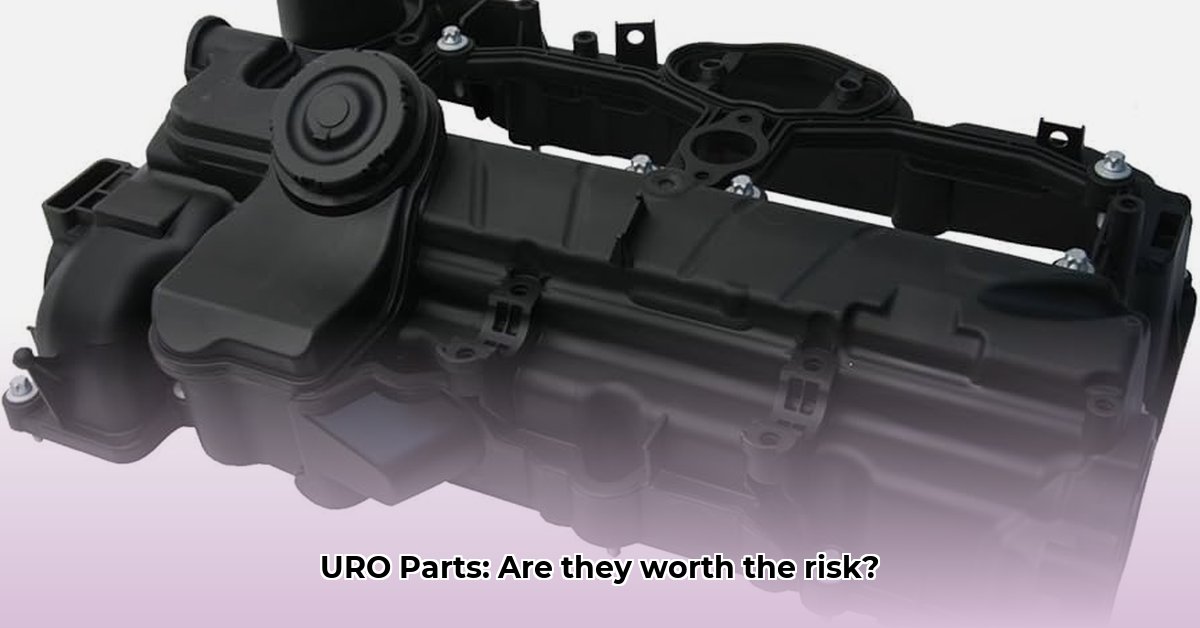
Choosing the right car parts can be challenging. URO parts offer a budget-friendly alternative to Original Equipment Manufacturer (OEM) components, but their reliability is frequently debated. This review analyzes user experiences, risk levels, and cost-effectiveness to help you determine if URO parts are the right choice for your vehicle.
Understanding URO Parts
URO parts are a prominent player in the aftermarket automotive parts industry. They present a lower-cost option compared to OEM parts, making them attractive to budget-conscious car owners. However, their reputation is mixed, with reports of both successful installations and premature failures. This review aims to provide an unbiased assessment based on available data.
A Detailed Review of URO Parts
URO part quality appears inconsistent across different categories. Some parts perform adequately, while others fail prematurely, potentially leading to costly repairs.
Suspension Components
URO suspension components (control arms, tie rod ends, etc.) consistently show the highest failure rate. Given their critical role in vehicle safety and handling, the high probability of early failure and the significant consequences of such failures make using URO suspension parts a high-risk proposition. A faulty suspension component can lead to loss of control and accidents.
Electrical Components
URO electrical components (switches, sensors, wiring harnesses) exhibit a more moderate failure rate. While a faulty switch might be an inconvenience, it's generally less dangerous than a suspension failure. Nevertheless, early failures can still result in additional repair costs.
Rubber and Plastic Components
URO rubber and plastic components (hoses, bushings) generally present the lowest risk. While their durability may not match OEM parts, failure is typically less severe and less likely to compromise safety. However, inconsistencies in quality still exist within this category.
Here's a summarized risk assessment matrix:
| Part Type | Probability of Early Failure | Severity of Failure | Overall Risk |
|---|---|---|---|
| Suspension Components | High | High | Very High |
| Electrical Components | Moderate | Moderate | Moderate |
| Rubber/Plastic Components | Low | Low | Low |
URO vs. OEM: A Cost-Benefit Analysis
URO parts offer significant cost savings upfront. However, this benefit can easily be negated by the cost of premature failures and the associated labor costs for repair or replacement. For safety-critical parts, the potential expense of multiple repairs may exceed the initial savings of purchasing cheaper URO parts. OEM parts, while more expensive, generally offer significantly better reliability and longevity.
Actionable Advice for Different Stakeholders
Choosing wisely requires careful consideration of the risks involved. The following guidelines offer actionable advice for different user groups:
1. DIY Mechanics:
- Prioritize Reliability: Only use URO parts on non-critical systems. Thoroughly research the part's reputation before purchasing. Focus on reviews from multiple users.
- Safety First: For critical parts such as brakes and steering, always choose high-quality, reputable brands.
2. Professional Mechanics:
- Transparency is Key: Be upfront with clients about the risks associated with URO parts. Advise customers to prioritize quality and reliability, especially for safety-critical components.
- Warranty Considerations: Factor in the potential challenges associated with URO part warranties.
3. Car Owners:
- Research is Essential: Before buying any URO part, check multiple online review sources. Look for patterns in reported failures.
- Safety First: For components directly related to vehicle handling and safety, always opt for OEM or reputable aftermarket brands.
Identifying Potential Problems
Inspect URO parts carefully upon receipt. Compare them to pictures of OEM parts to detect any irregularities or signs of poor craftsmanship. Return any damaged or suspect parts immediately.
Conclusion: Making Informed Decisions
URO parts present a cost-effective alternative but show inconsistency in quality and reliability. While cost is a vital factor, safety and longevity should always take precedence. Thorough research, careful consideration of the risks involved, and prioritizing reputable brands for safety-critical parts are essential for ensuring smooth and safe vehicle operation. The long-term cost of replacing failed parts often negates the initial savings.